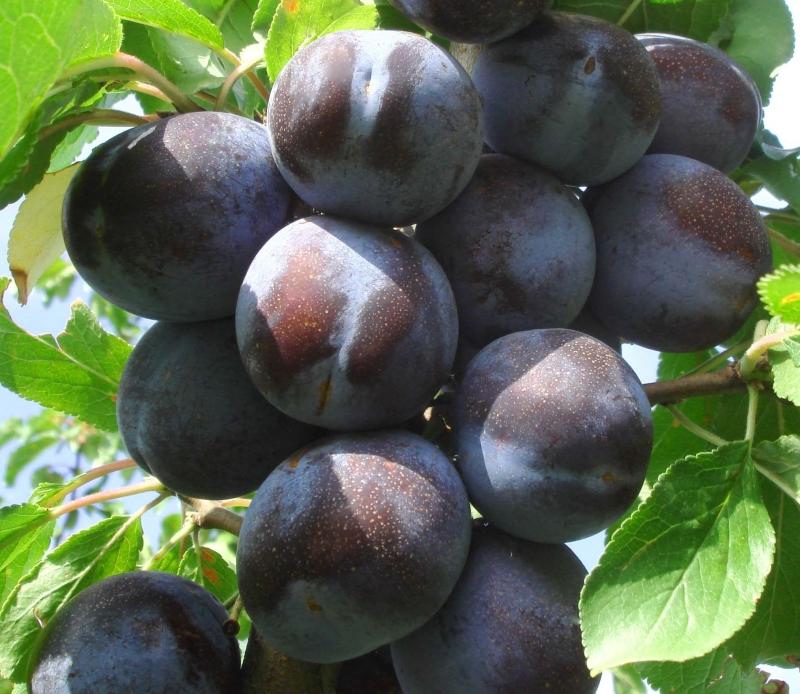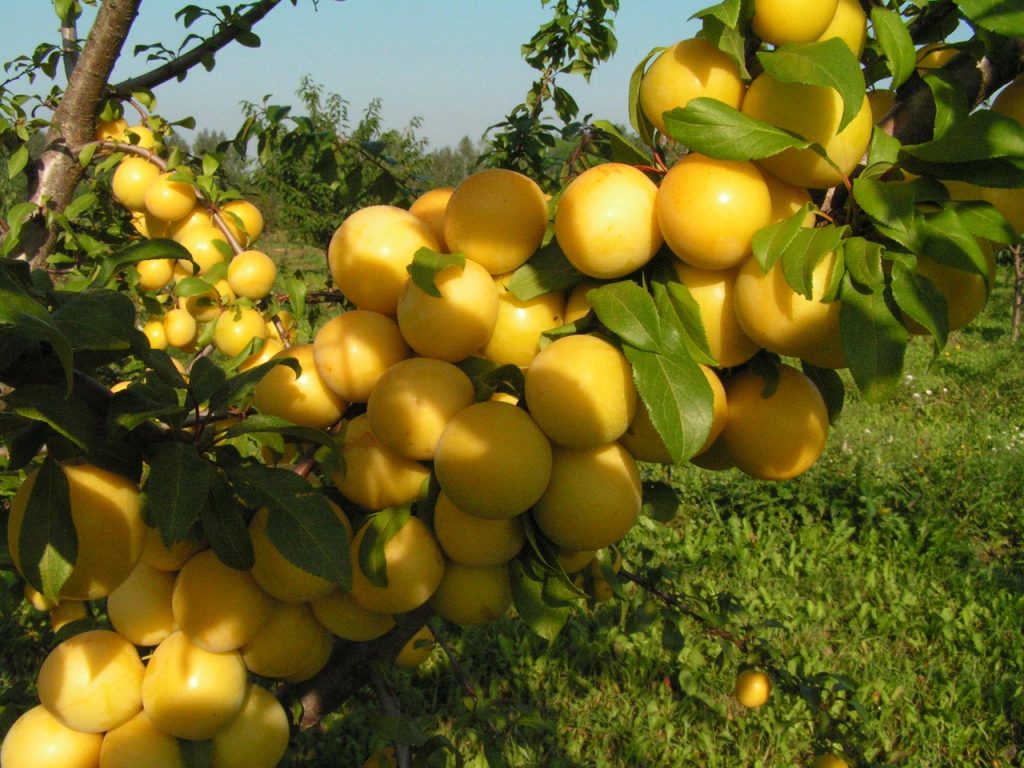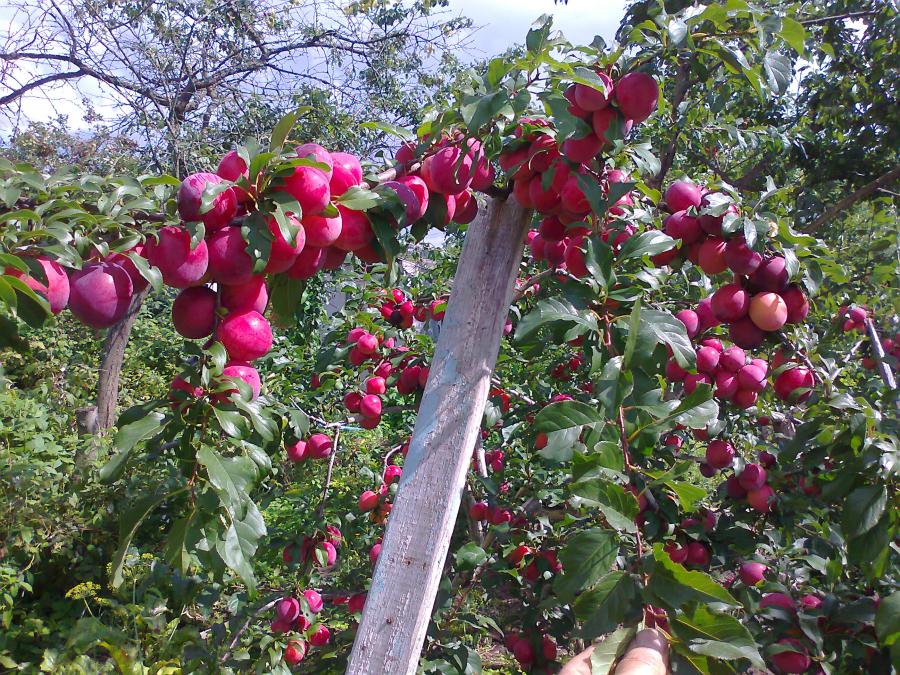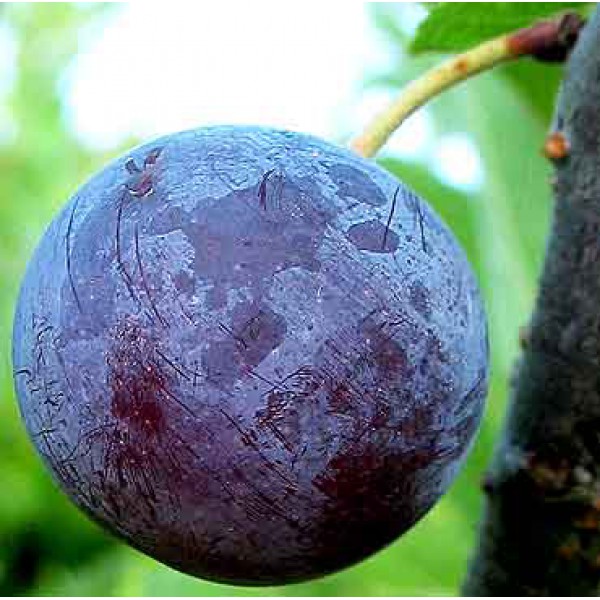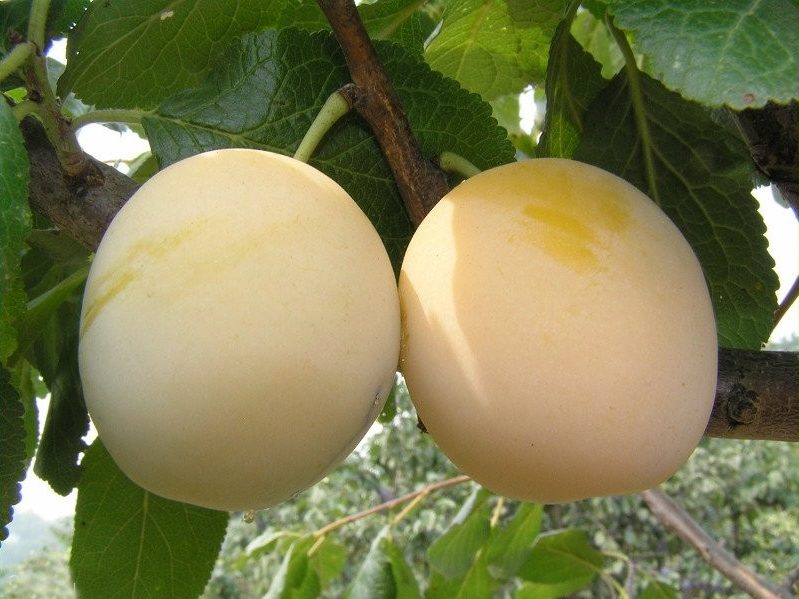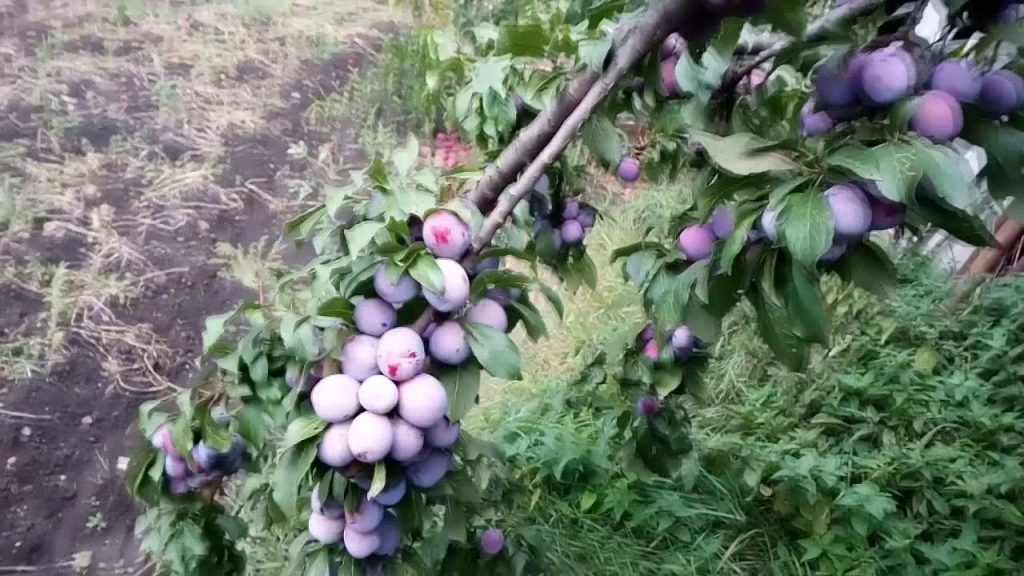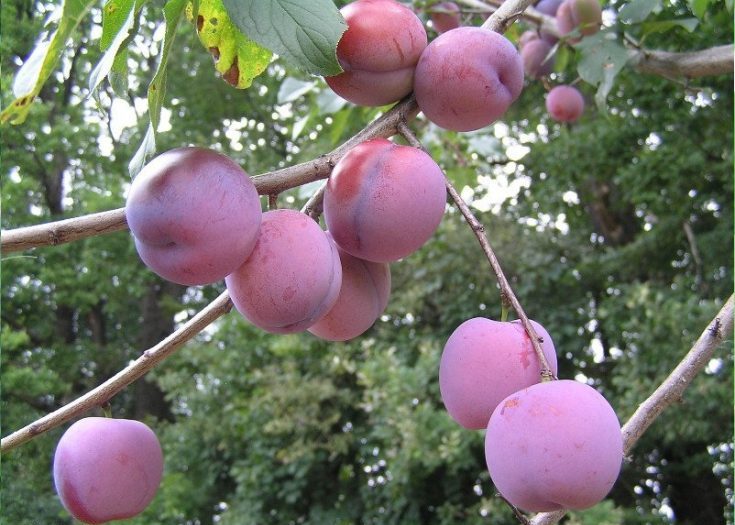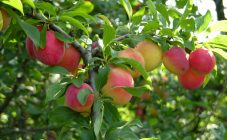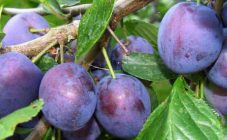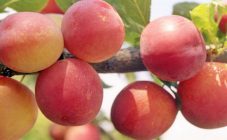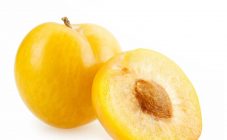Content:
Home plum is found in most of the gardens of our country and the world. Delicious, nutritious and healthy fruits are the reason for such wide popularity of this species.
Short description
Home plum is one of the most widespread species in Russia and the world from the Pink family. The species was obtained by natural pollination of blackthorn and cherry plum. The exact picture of the origin of the species has not yet been restored, but it is believed that its homeland may be the territory from the Eastern Caucasus to the eastern coast of the Adriatic. This includes Asia Minor and the Balkan Peninsula. This knowledge will allow scientists over time to obtain a drawing of the origin and distribution of the domestic plum.
On the territory of Russia, the first plums appeared in the middle of the 17th century in the garden of the royal family near Moscow, located in the village of Izmailovo. They were brought there from Western Europe. Today they are widespread throughout the world, Europe, Russia, China, and the USA.
What a plum looks like
Plum house is a woody plant up to 15 meters in height with an ovoid crown. The foliage is simple, alternately arranged, with a shortened petiole. Its length is usually 4-10 cm, width varies from 2 to 5 cm. Flower buds are also simple and form 1-3 flowers. Self-fertility varies depending on the characteristics of the particular cultivar, but the presence of other cultivars in the garden always increases the yield of the plum. The fruit of the plum is a monochromatic with a color ranging from light yellow to deep purple, most often blue. The bone is flattened and pointed at both ends.
How long does a plum live
The lifespan of one tree is usually about a quarter of a century. The plant bears fruit for 10-15 years.
Home plum is one of the divisions of the Plum genus, which includes more than 250 species. Among them, the most related to the home plum are:
- American plum;
- cherry plum (Russian plum);
- dwarf plum;
- plum moldavian;
- Chinese plum, etc.
Home plum differs from these types in color, taste and some other external features. Can vary:
- productivity;
- adaptability;
- winter hardiness;
- resistance to pests and diseases, etc.
Plum is a berry or fruit
It is generally accepted to include plum fruits in the fruit category, but recently it has been suggested that they are berries. In botany, it is considered that berries are fruits with many seeds, ripening on bushes or herbaceous plants. From this point of view, plum fruits growing on tree plantations and having one pit cannot be classified as berries. However, thanks to breeding achievements, it was possible to obtain varieties or to find species that form small fruits on bushy plants. In this regard, the question arose about classifying plums as berries.
Based on botanical definitions, it would be more correct to classify the plum as a fruit. The fruit is a succulent fruit that forms on woody or shrub plants, resulting from pollination of a flower, having one or more seeds that sprout when dropped into the ground. This definition is closer to plum than berry. Thus, the plum is a fruit.
Plum: tree or shrub
For more accurate selection and cultivation, it is necessary to know the answer to the question: is a plum a tree or a shrub? In culture, there are various varieties of plum, but the house plum in question belongs to trees.
Varieties
There are more than 1000 varieties of home plums in the world, which differ in quantitative and qualitative indicators. On their basis, hybridization is being intensively carried out in a number of scientific institutions of the corresponding profile.
Hungarian Korneevskaya
This variety is considered one of the most large-fruited among all plums. Woody plants with medium vigor. The crown is medium thickened, highly spreading. Shoots are grayish-brown in color, ironed, bare, slightly curved, covered with a significant number of lentils. The buds are located at an angle of 45 ° to the stem, medium in size, have a conical shape, and are painted brown. The leaves are obovate, corrugated, short-pointed, slightly pubescent. The leaf petiole is shortened, also with slight pubescence. There are two small brown glands. Flowers can be either single, double or even triple. They are of a typical white color, small. Fruiting occurs on elongated shoots of one year old and on spurs (short stems).
Fruit weight usually varies from 30 to 35 grams. They are characterized by an oval shape and a violet-brownish color with a pronounced waxy coating. There are many small subcutaneous markings that are outwardly subtle. The fruit has a pointed apex and a deep, narrowish fossa. The seam is poorly visible and short. The peduncle is straight. Harvest with juicy, bright yellow pulp with a pleasant sweet taste. The juice has no color. A saber-shaped bone, oblong, occupies about 7% of the total weight of the fruit.
Flowering takes place in the first ten days of May, the fruits ripen in mid-August - early September. Fruiting begins in the 3-4th year. The variety can pollinate itself, forms a relatively high yield (from a tree 6-10 years old, 25-30 kg of fruit can be harvested). The wood is characterized by increased winter hardiness, however, in severe winters, freezing of flower buds is observed. Drought resistance is good, it can be increased by grafting the variety onto an apricot stock. The variety is affected by diseases by 2 points, by harmful insects by 3 points. At high yields, branches are sometimes broken. The variety is suitable for cultivation in conditions of intensive gardening.
Morning
It is considered a typical variety with relatively small fruits. Trees of medium vigor with an oval crown and medium thickening and leafiness. The surface of the sheet is covered with wrinkles. No pubescence. The petiole is of medium size and has glands. Flowering and fruiting occur both on bouquet branches and on spurs.
Fruits weighing up to 26 g, oval. The main color of the crop is green-yellowish, and the integumentary color is a pinkish blush on the sunny side. There is no pubescence, but there is a characteristic waxy coating. The top and base of the fruit are oval. The funnel is shallow at the base, the abdominal suture is also weak. The commercial quality of the crop is at a high level. The pulp is yellow in color, with a refined fibrous consistency. The juice content and density of the fruit are average, as are the aroma and sugar content of the crop. According to the tasters, the taste corresponds to a score of 4 points. The peduncle is characterized by an average length. The stone has a rounded oval shape and weighs about 1.7 grams. This is approximately 6.5% of the total fruit mass. The peduncle is separated from the fruit with a dry separation.A versatile variety that can be used for various types of technological processing. It has an average ability to transport.
Morning blooms in the second decade of May, and begins to sing in the first half of August. It begins bearing fruit in the 6th year and bears fruit for about 21 years. The variety is self-fertile. Productivity exceeds the average level for the culture (up to 15 kg of fruits can be harvested from one tree). Fruiting is relatively regular (for 16 years - 4 years without fruit).
In winter, trees at an average level are affected by winter frosts.
The drought resistance of the variety is average. Morning is relatively resistant to fruit rot, clasterosporium disease and other diseases typical of plums (affected by them by 0.5 - 1 points), and pests damage trees by an average of 2.5-3 points. The variety is recommended for cultivation under normal conditions in the Moscow region and other areas of the Central region of Russia, and it is better not to use it for intensive gardening.
Anna Shpet
The variety is considered one of the most vigorous. The crown is strongly thickened, with an expanded pyramidal shape. The crown contains overgrowing branches, whose life cycle lasts up to 12 years. The stem is even and straight, smoothed. The number of lentils and their size are average. Shoots are even, internodes about 4 cm wide. They have a slight brown color and no pubescence. The vegetative bud is small and pointed, tightly pressed to the shoot, made in the form of a cone. The leaf is oblong-oval with a pointed upper part. The leaf blade is relatively small, flat, light greenish in color.
The fruit is most often broadly ovate or oval, with equal sides, weighing up to 45 g. The main color is light yellowish, the integumentary color is solid, reddish-violet. No pubescence. There are a large number of gray subcutaneous dots. There is a dense waxy coating. The pulp is yellow-green, when it comes into contact with air, it almost does not darken, it is fibrous in consistency, juicy, compacted. The stone is oval-oblong, weighing up to 1.5 grams.
Flowering occurs in the second decade of April, and the fruits are harvested in the last days of September. The variety is partially self-fertile, the varieties Bogatyrskaya, Vengerka Moskovskaya, etc. are suitable for pollination. It enters the fruiting season in the 3-5th year. Productivity is very high, there is no frequency in fruiting. Wood and flower buds are affected by frost at an average level. Due to the high regenerative capacity, the kidneys can recover even after severe damage. Drought resistance is high. There is no sufficient resistance to moniliosis and polystygmosis, and on carbonate soils, plantations of the variety are affected by chlorosis.
Zarechnaya early
This plum variety is a typical representative of low-growing fruit plants. In trees, the crown is made in the form of a ball. Medium thickening, brown shoots, slightly curved, with medium-distant internodes. There are many shortened gray lentils that are clearly visible in appearance. Buds are dark brown, cone-shaped, medium in size, located at an angle to the shoot, characterized by a pointed upper part. The leaf is oval, large, the apex is noticeably pointed, matte, smoothed, with a rich green color. The lamina is flat, with slight boat-shaped bending. The flowers are bright white, medium in size, with rounded petals.
Fruits weighing about 40 g, the maximum weight reaches 50 g. Fruits are round-oval, with a dark purple color. There is a pronounced waxy coating and noticeable subcutaneous spots. The fruit apex is strongly depressed, with a deep funnel and a deep ventral suture.The pulp is tender, juicy and firm, colored in amber color, pleasant sour-sweet taste, which is estimated by the tasters at 4.5 points. The stone is oval, medium in size, easily separated from the pulp. The peduncle is thickened and shortened, light green in color.
Trees enter the fruiting season 3-4 years after planting. Ripening proceeds quickly and simultaneously and falls on the twentieth of July. The advantages of Zarechnaya early include high productivity and an increased degree of resistance to frost.
Knowing what a home plum is and being familiar with its properties, it becomes more convenient to select both a suitable variety and the cultivation conditions corresponding to it. If all these rules are observed, you can get a high, healthy and high-quality crop yield along with other fruits, berries or vegetables.
